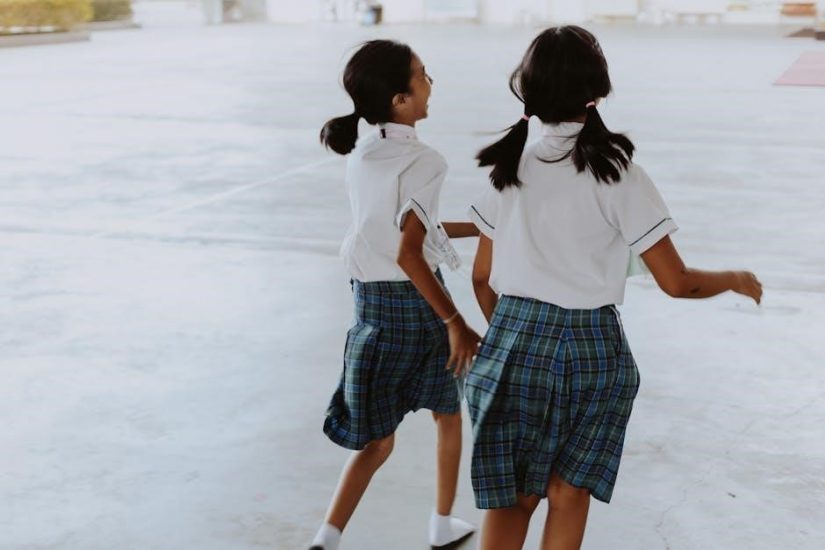The first day of school is a pivotal moment, blending excitement with jitters. It sets the tone for the year, fostering connections and a sense of belonging.
Importance of the First Day of School
The first day of school is a cornerstone for setting the tone of the academic year. It shapes students’ attitudes, engagement, and perceptions of the classroom environment. A positive first day helps students feel safe, valued, and inspired, fostering a sense of belonging and excitement for learning.
For middle schoolers, this day is particularly crucial as it transitions them into a new phase of education. Engaging activities and clear communication of expectations help ease anxiety and build connections. A well-planned first day lays the foundation for a successful year, encouraging collaboration, creativity, and growth.
Setting the Tone for the School Year
The first day of school is instrumental in establishing a positive and productive classroom culture. By engaging students in meaningful activities, educators can create an environment where students feel valued, inspired, and eager to learn. Icebreakers, team-building exercises, and discussions about expectations help foster connections and set clear guidelines. These interactions lay the groundwork for a year filled with collaboration, creativity, and growth. A well-structured first day not only eases students’ anxieties but also inspires them to embrace the challenges and opportunities ahead. It’s a chance to build trust, encourage participation, and create a sense of community, ensuring a strong foundation for the entire school year.
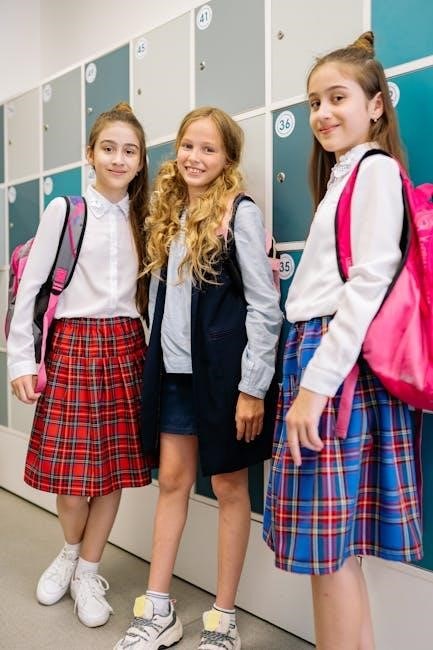
Icebreaker Activities
Engaging icebreakers like index card commonalities, “Would You Rather” questions, and “Two Truths and a Lie” help students connect, build rapport, and feel comfortable in their new environment.
Index Card Commonalities
Index Card Commonalities is a simple yet effective icebreaker activity. Students and teachers write on index cards: something they share with almost everyone, something with half the class, something with a few, and something unique to themselves. Each person stands and reads their statements aloud, sitting down if the statement isn’t true for them. This activity fosters connections, encourages participation, and helps build a sense of belonging. It’s especially useful for middle schoolers, as it promotes inclusivity and breaks the ice naturally. Guidelines are essential to ensure appropriateness and comfort for all participants. This activity can be done daily or weekly, making it a flexible tool for classroom bonding.
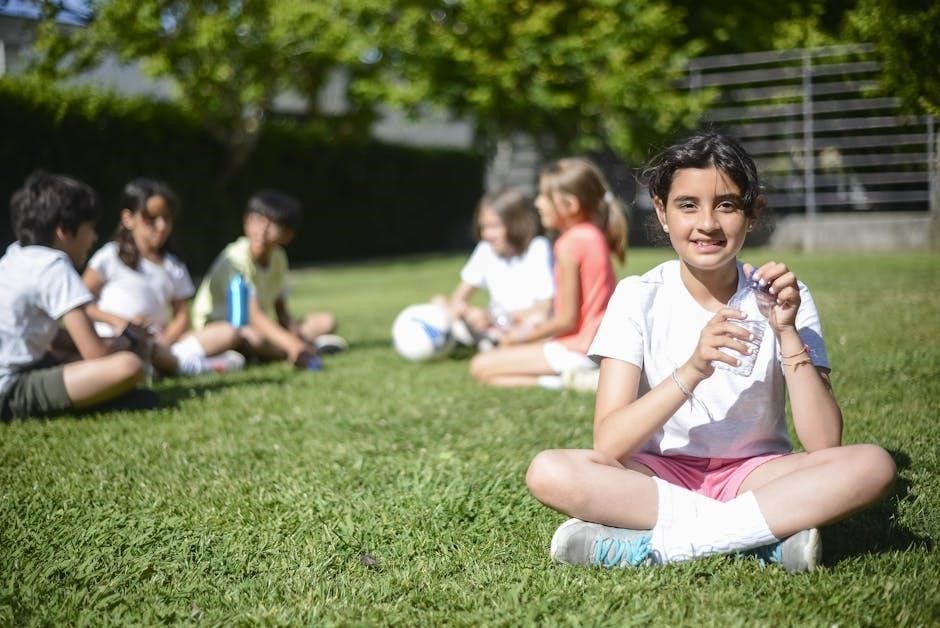
Would You Rather Questions
Would You Rather Questions is a fun and engaging icebreaker activity that sparks creativity and conversation. Students are presented with two challenging options and must choose which they prefer. For example, “Would you rather travel anywhere in the world or learn any new skill?” This activity encourages critical thinking, teamwork, and laughter. It’s ideal for middle schoolers, as it helps them get to know each other and the teacher in a relaxed setting. The questions can be tailored to suit the classroom environment, making it a versatile tool for building connections. This activity not only breaks the ice but also fosters a sense of community and shared experiences, setting a positive tone for the school year.
Two Truths and a Lie
Two Truths and a Lie is a popular icebreaker activity that encourages students to share interesting facts about themselves while fostering healthy skepticism and teamwork. Each student presents two true statements and one false statement about themselves, such as hobbies, pets, or unique experiences. Classmates then guess which statement is the lie, sparking fun and engaging discussions. This activity helps students get to know one another on a personal level while practicing critical thinking and communication skills. It’s an excellent way to create a relaxed and inclusive classroom environment, allowing students to feel comfortable sharing and connecting with peers. The interactivity of this game makes it a memorable and enjoyable experience for middle schoolers.
Human Bingo
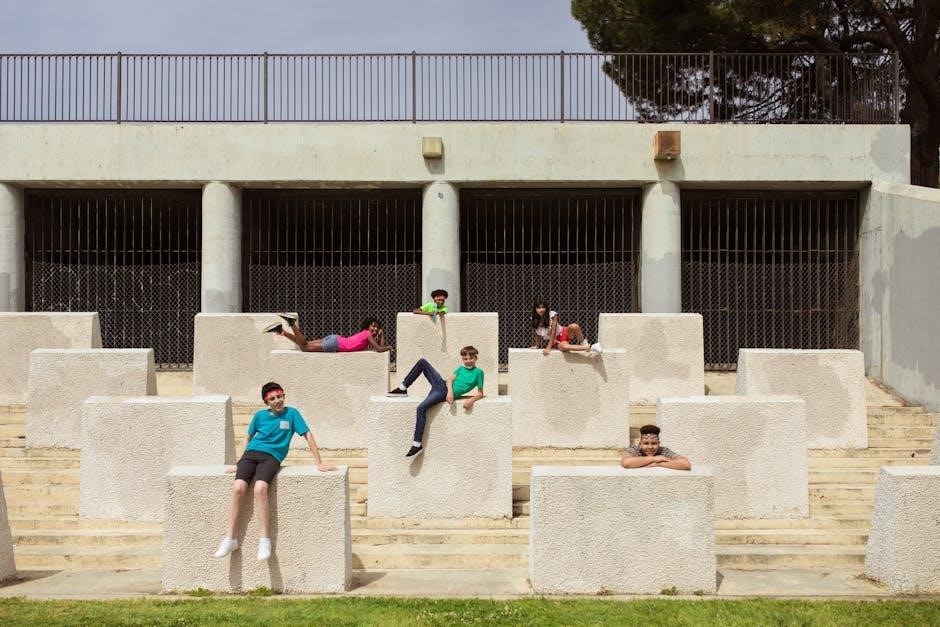
Human Bingo is a dynamic icebreaker activity that encourages students to interact with one another while learning unique traits about their peers. Create a bingo card with different traits, hobbies, or interests in each square (e;g., “has traveled to another country” or “speaks more than one language”). Students circulate around the room to find classmates who fit each description, obtaining signatures as proof. The goal is to fill the entire card or complete a row/column. This activity fosters connections, breaks the ice, and creates a lively atmosphere. It also helps students feel included and valued, setting a positive tone for the school year. Human Bingo is an engaging way to build camaraderie and kickstart meaningful relationships in the classroom.
Team-Building Activities
Team-building activities foster collaboration, problem-solving, and creativity, helping students build trust and camaraderie. These engaging exercises lay the foundation for a supportive and inclusive classroom environment.
The Human Knot
The Human Knot is a fun and interactive team-building activity perfect for the first day of school. Students stand in a circle, each grabbing the hands of two people not adjacent to them, forming a “knot.” The goal is for the group to work together to untangle themselves without letting go of each other’s hands. This activity encourages communication, problem-solving, and trust among students. It also helps break the ice and fosters a sense of collaboration. The Human Knot is an excellent way to get students moving, laughing, and bonding while establishing a positive classroom environment. It’s simple to set up and requires minimal materials, making it an ideal icebreaker for middle schoolers.
Mystery Cube Challenge
The Mystery Cube Challenge is an engaging and interactive activity designed to spark curiosity and teamwork. Students are given a small, mysterious cube with different symbols, colors, or patterns on each face. Their task is to work in groups to decipher the cube’s secrets, such as predicting outcomes or solving puzzles. This activity encourages critical thinking, collaboration, and problem-solving skills. It also fosters creativity as students interpret the cube’s meanings in unique ways. The Mystery Cube Challenge is an excellent way to break the ice and create a sense of shared purpose among students. It’s a hands-on, low-prep activity that aligns perfectly with the first day of school, helping to establish a collaborative and engaging classroom environment.
Collaborative Art Projects
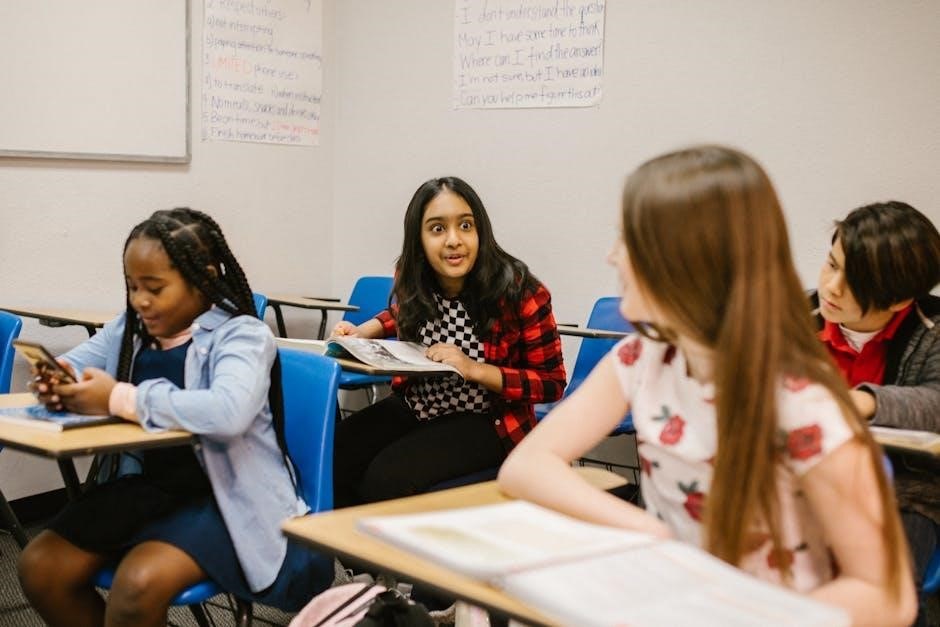
Collaborative art projects are a creative way to foster teamwork and unity on the first day of school. Students work together to create a shared art piece, such as a class mural, vision board, or mixed-media collage. Each student contributes their unique perspective, symbolizing the diversity and strength of the group. This activity encourages creativity, communication, and mutual respect. It also serves as a visual reminder of the classroom community and shared goals. By involving everyone in the artistic process, collaborative art projects help break down barriers and build connections. The finished piece becomes a meaningful display, reflecting the collective energy and aspirations of the class. This engaging activity sets a positive tone for the school year and celebrates individuality within a unified group.
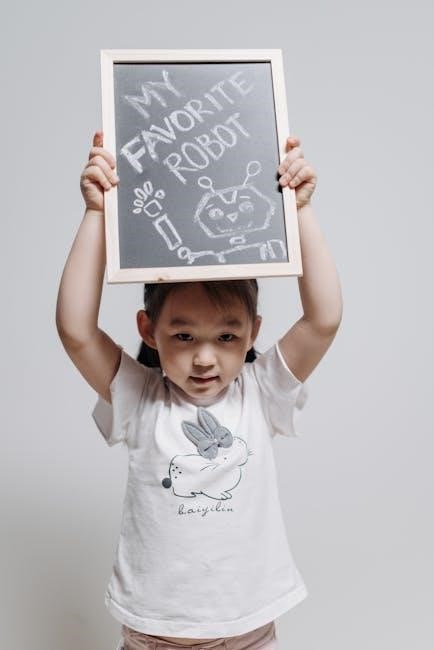
Classroom Management
Establishing clear expectations and routines on the first day is crucial for a structured learning environment. Discussing and creating classroom rules together fosters mutual respect and accountability, setting a positive tone for the year.
Discussing Classroom Expectations
Discussing classroom expectations on the first day is essential for establishing a positive and respectful learning environment. It sets the foundation for how students and teachers will interact throughout the year. By involving students in the conversation, educators can ensure that everyone understands and agrees upon the guidelines. This collaborative approach fosters a sense of ownership and accountability. Expectations should be clear, specific, and aligned with the school’s values. Topics may include respect for others, responsibility for materials, and active participation in lessons. Encouraging open dialogue helps students feel heard and valued, creating a supportive atmosphere. This discussion also provides an opportunity to address any concerns and clarify routines, ensuring a smooth transition into the school year.
Creating Classroom Rules Together
Creating classroom rules collaboratively with students is a powerful way to foster responsibility and ownership. By involving students in the rule-making process, educators ensure that the guidelines are clear, fair, and meaningful. This approach encourages active participation and helps students understand the importance of shared expectations. Teachers can guide the discussion by asking open-ended questions, such as “What rules do we need to ensure everyone feels safe and respected?” or “How can we create an environment where everyone can learn?” This collaborative process not only builds a sense of community but also teaches students about decision-making and accountability. The resulting rules are more likely to be followed because students feel invested in their creation. This activity also sets the stage for a positive and productive school year.
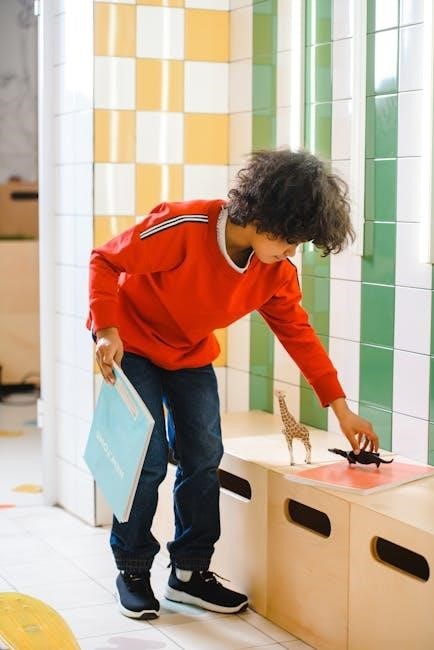
Goal Setting
Goal setting on the first day empowers students to envision their aspirations and create actionable plans. Vision boards and SMART goals help students visualize and achieve their objectives effectively.
Creating a Vision Board
Creating a vision board is a powerful activity that helps students visualize their goals and aspirations; Provide materials like posters, markers, and stickers, and guide students to express their personal and academic ambitions. Encourage them to include quotes, symbols, or images that inspire them. This activity fosters a growth mindset and allows students to reflect on what they hope to achieve. Displaying the vision boards in the classroom serves as a daily reminder of their goals, promoting motivation and focus throughout the year. It also offers a creative outlet for self-expression and helps build a positive classroom culture centered on aspiration and growth.
Setting SMART Goals
Setting SMART (Specific, Measurable, Achievable, Relevant, Time-bound) goals is a valuable first-day activity that helps students establish clear objectives. Begin by explaining each component of SMART goals, ensuring students understand how to create actionable plans. Provide examples, such as improving grades or developing better study habits, to guide them. Encourage students to write down their goals and share them with a partner or the class for accountability. Teachers can also offer workshops or digital tools to help students track progress. This activity fosters accountability, self-reflection, and a growth mindset, while also teaching time management and prioritization skills. By setting SMART goals, students are empowered to take ownership of their learning journey and stay motivated throughout the year.

Inspirational Activities
Inspirational activities on the first day of school help students feel motivated and connected. Reading quotes, discussing growth mindsets, and creating vision boards foster positivity and goal-setting, setting a hopeful tone for the year.
Reading Inspirational Quotes
Reading inspirational quotes on the first day of school is a powerful way to set a positive tone and motivate students. Quotes from notable figures or relatable sayings can spark meaningful discussions and encourage reflection. This activity helps students feel connected and inspired, fostering a sense of belonging. Teachers can display quotes on the board or distribute them on handouts, allowing students to share their thoughts or write personal reflections. For example, quotes about perseverance or kindness can align with classroom values. This simple yet impactful activity creates a supportive environment and helps students approach the year with optimism and confidence.
Growth Mindset Discussion
A growth mindset discussion is a valuable first-day activity that encourages students to embrace challenges and view failures as learning opportunities. Teachers can introduce the concept by explaining the difference between fixed and growth mindsets. This discussion helps students understand that their abilities can develop through effort and perseverance. Activities such as group reflections, interactive exercises, or sharing personal experiences can make the concept relatable. By fostering a growth mindset, educators create a supportive classroom environment where students feel confident taking risks and pursuing their goals. This discussion sets a positive tone for the school year, empowering students to approach learning with resilience and confidence.
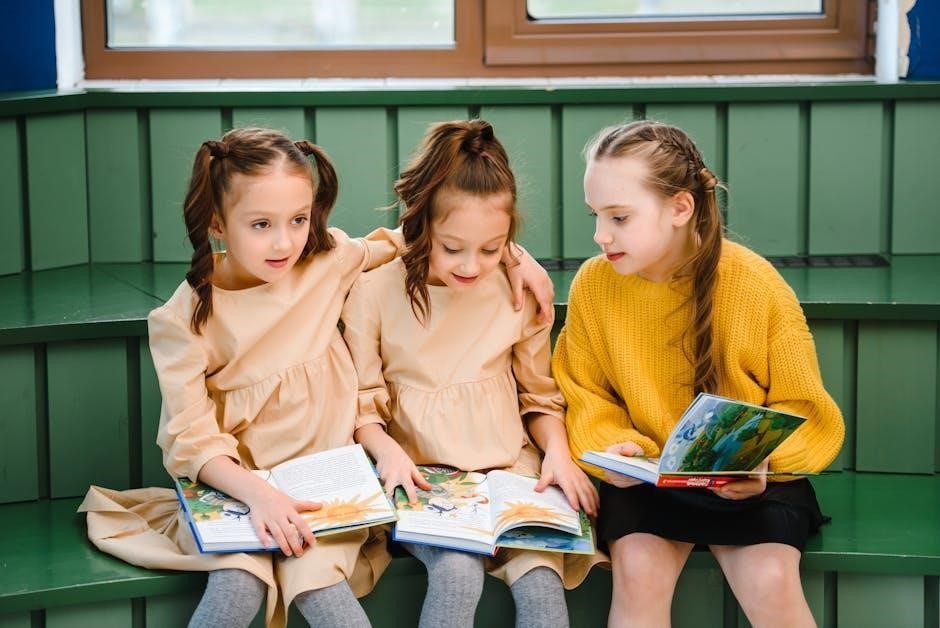
Interactive Learning
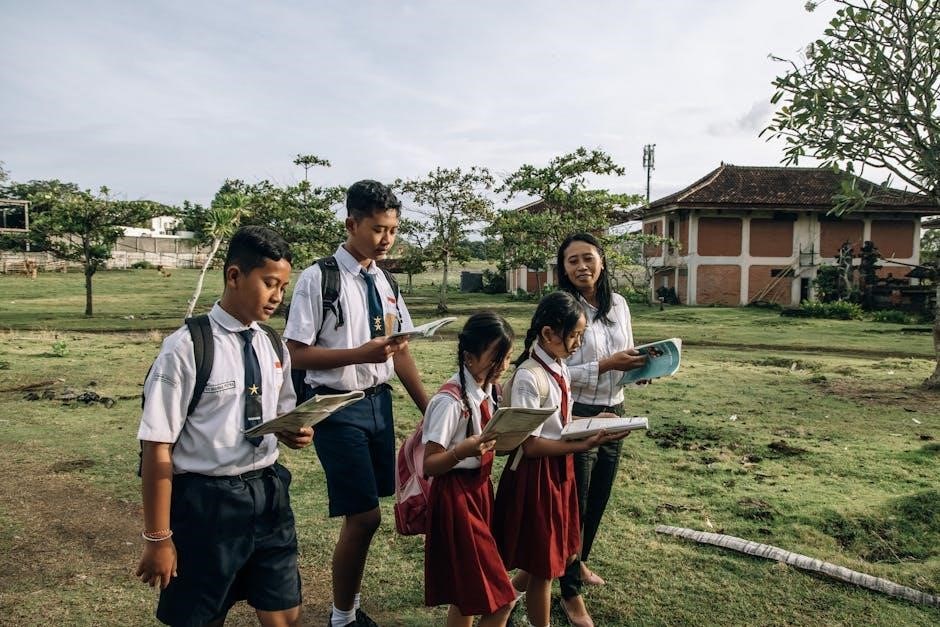
Interactive learning engages students through hands-on activities like mock apocalypses and learning stations, fostering teamwork, problem-solving, and creativity while making learning dynamic and memorable.
Mock Middle School Apocalypse
The Mock Middle School Apocalypse is a fun and engaging activity designed to foster teamwork and problem-solving skills. Students are placed in a simulated challenging scenario where they must work together to “survive” and rebuild their school community. This activity encourages creativity, collaboration, and critical thinking while allowing teachers to observe students’ personalities and dynamics in action. It’s a unique way to break the ice and set a positive tone for the year, helping students feel connected and motivated from day one. The activity also serves as a bonding experience, making it easier for students to interact and build relationships with their peers.
Learning Stations
Learning Stations are an interactive and engaging way to kick off the school year. Students rotate through different stations, each designed to focus on specific skills or topics. These stations can include icebreakers, problem-solving tasks, and creative activities that encourage collaboration and teamwork. By incorporating hands-on learning, students are able to explore new concepts while getting to know their peers. This approach also allows teachers to assess students’ strengths and areas for growth in a relaxed environment. Learning Stations are a great way to make the first day of school memorable and set a positive tone for the year ahead.
The first day of school sets the tone for a successful year. Engaging activities create a welcoming environment, fostering connections and a growth mindset from the start.
The first day of school is a golden opportunity to set a positive tone and build connections. Key activities include icebreakers like index card commonalities and “Would You Rather” questions, which help students bond and share perspectives. Team-building exercises such as the human knot and collaborative art projects encourage teamwork and creativity. Classroom management discussions ensure everyone understands expectations and rules, fostering a respectful environment. Goal-setting activities, like vision boards and SMART goals, inspire students to aim high. Inspirational quotes and growth mindset discussions motivate learners, while interactive learning through mock apocalypses and learning stations engages them dynamically. These activities create a welcoming, inclusive classroom, setting the stage for a successful school year.
Looking Forward to the School Year
The first day sets the stage for a year filled with growth, discovery, and connection. As students and teachers embark on this journey, the focus shifts to fostering a culture of learning and collaboration. The activities introduced on day one lay the groundwork for building strong relationships and a supportive classroom environment. With a clear vision and shared goals, the school year ahead promises to be filled with exciting challenges, new opportunities, and meaningful experiences. By encouraging creativity, perseverance, and teamwork, educators help students develop the skills and confidence needed to thrive. The anticipation of what’s to come creates a sense of excitement, as the year unfolds with endless possibilities for success and memorable moments.
